Heritage Olhão
With over thousands of places to explore, Olhão opens its doors for the more adventurous or for the more demure. All your assets, from the oldest to the most recent, attracts both for its history as for its beauty, is so Olhão.
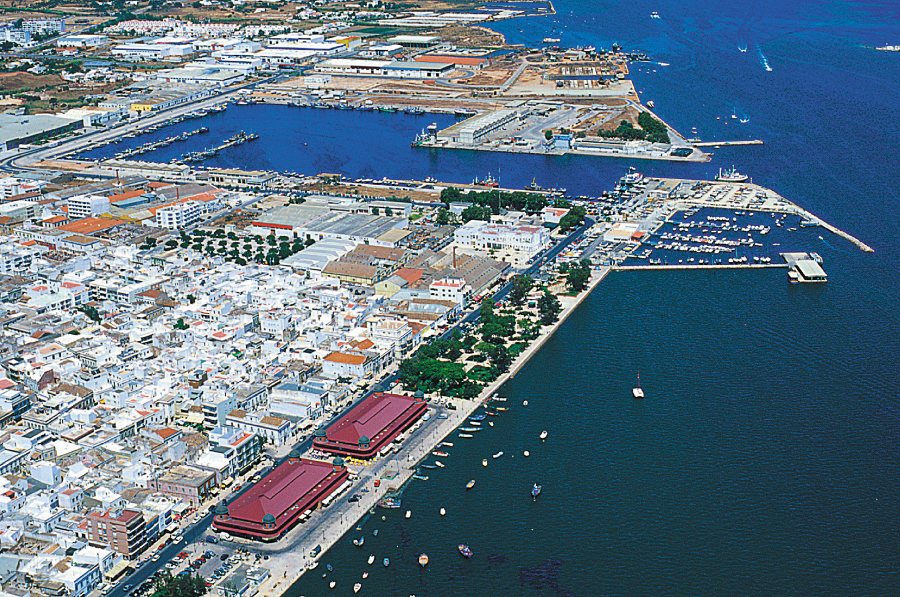
Commitment Olhão Maritime – today houses the Museum of the City, with a great historical value building, which offers its own history, displaying during various temporary or permanent exhibitions on topics related to the city and the county. Date 1768 the public deed with two beds masters chosen to carry out the work: John Tavares dos Santos and Alvaro da Silva. The building, with two floors and three fronts with a care frontispiece treatment was completed three years later, as can be read in its facade “This work was done at the expense of the sailors of the Noble House of the Holy Body of this place of Olhão, in Reinado Felicissimo time the Faithful King Mr. King Joseph the First, God rest, and Judge of the same house, António de Gouveia, in the year 1771 “. This space was created to support the city’s fishermen had on the ground floor, one apothecary (pharmacy) and a butcher shop to service the sailors. On the main floor was located the room of Dispatches which features a painting on wood lining the roof where stands the coat of the Portuguese royal arms.
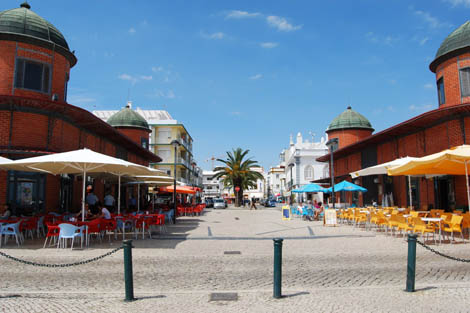
Olhão Markets – landmark of the city Olhão, these began to be built in 1912, being inaugurated four years later. They are one of the picture postcards of Olhão, almost a century ago and are places to visit for tourists and residents. Stealing space of Ria, consolidating the constructions through a process known as pile drivers, each building being supported by eighty eight poles, connected by brick masonry arches. It is a place to visit for its architectural features, including modeling of the iron architecture and glass, the building with huge urban impact, in brick and steel structure, was built to provide the city of Olhão a functional markets, which It came to pass. All the best days of fish, fruits and vegetables are offered. Undergoing rehabilitation works in the late twentieth century, they keep the exterior appearance, reopening to the public in 1998. One of the latest additions is the interior, lined with tiles painted by Costa Pinheiro.
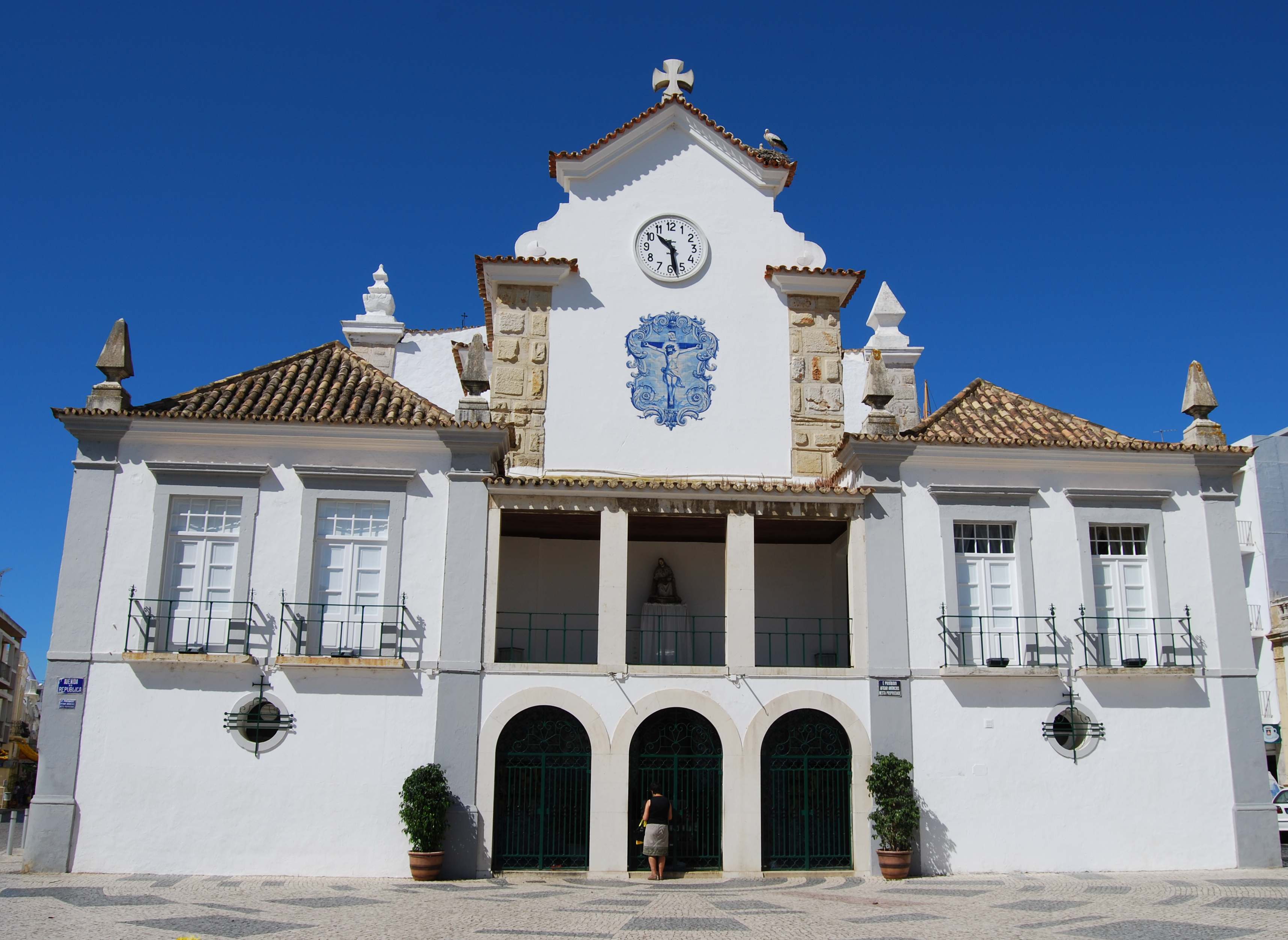
Mother Church de Nª Srª do Rosário – the building of the old Church of Our Lady of the Rosary, and current Church of Olhão, began em1698, opening the cult, still unfinished in 1715, and the contract for the construction of its tower dates from 1722. Because of its importance, attracts many stares of tourists visiting the historical area of Olhão, in downtown, where it is located. In the second half of the eighteenth century its main facade, one of the most impressive in the Algarve, was reworded to feature a triangular crowning feature. Inside, a single nave and transept slightly protruding, there are five altars. The main chapel has an altarpiece and triumphal arch in gilt, a ceiling decorated with a fresh and an image of Our Lady of the Rosary.
Senhor dos Aflitos Chapel – with a baroque building, is located at the rear of the Mother Church, and consists of two floors. This chapel boasts the center a tile panel with the Crucifixion of Christ. It became a place of worship for thousands of people and, as such, is also a must for all visitors. Facing the wide and bustling Avenida da República, this is great starting point to discover the city and local businesses.
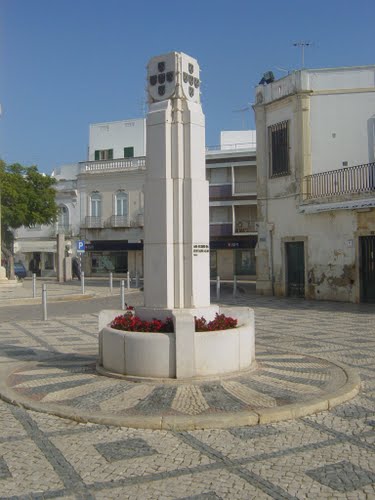
Monument to the Heroes of the Restoration – allusive to the brave men who participated in the revolt against the French in 1808, opened in 1931, designed by the architect Carlos Ramos Chambers, who sought to bring it into line with the main features of the traditional architecture olhanense. Situated very close to the Church and the Lord’s Chapel of the Afflicted, along the Avenue of the Republic, this monument is part of the city, should be part of the roadmap for all who want to know the story of the victory of olhanense people against the French, and the consequent expulsion of these in 1808.
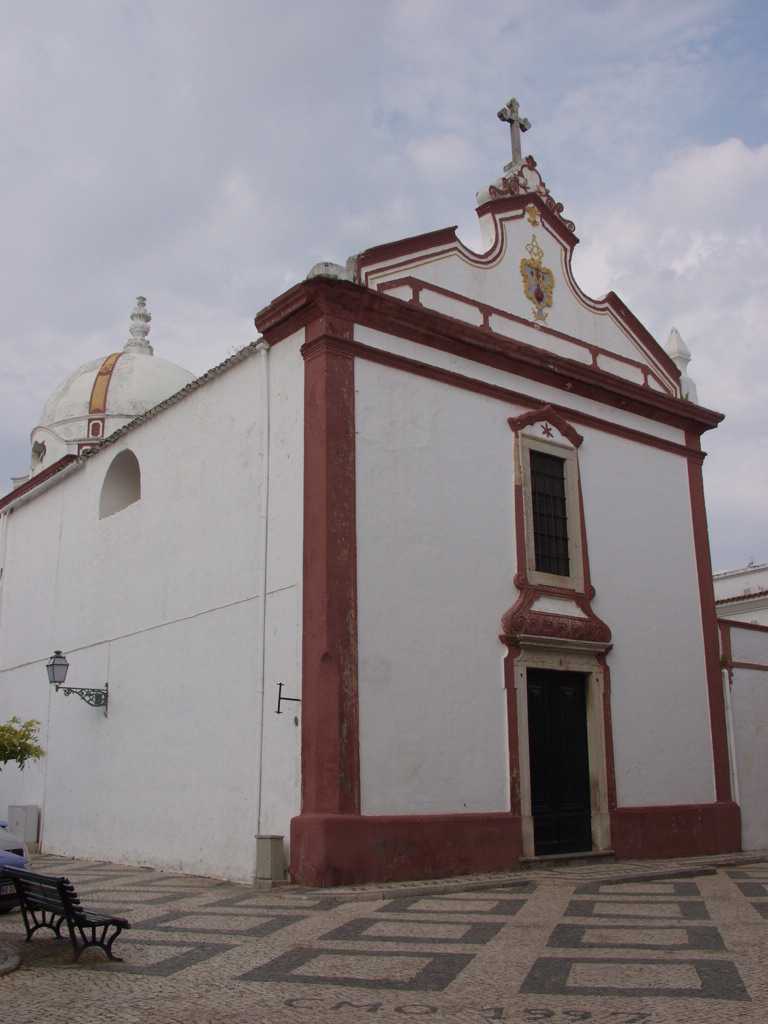
Church of Nossa Senhora da Soledade – a place of worship, whose construction dates from the early seventeenth century, when are the first references to the presence of Our Lady of Solitude Chapel at the time Chapel of Our Lady of the Rosary, passed the parish with the creation of Olhão parish, in 1695. It is a longitudinal plan of chapel with a single nave, covered by a vault based on cornice, divided into three spans and illuminated by a large window in the front wall and windows on the sides. Relatively modest construction but incorporating elements of any regional artistic wealth, as the dome over the chancel. Inside stand out the altarpieces and an image of Santa Luzia. With an exterior aspect marked by simplicity, it is nevertheless to appeal to the interested gaze of visitors, which ultimately also discover your inner.

Historic City – It is one of the ‘mandatory’ places to visit in Olhão due to its typicality and the story ends. Develops between Barreta, formed the core of Gaibéu and Manuel Lopes (the West), and the Levante district (in the east). This site, near the Ria Formosa, are characterized by irregular-arrangement of white houses topped by roof terraces which rise the lookouts and contramirantes, printing them a unique look. Also the diversity of corners, alleys, streets and alleys, with windows and doors trimmed with parapets are a deeper feature of this area. Its inhabitants, some who already live here for decades, continue to populate these streets full of charm and tradition.
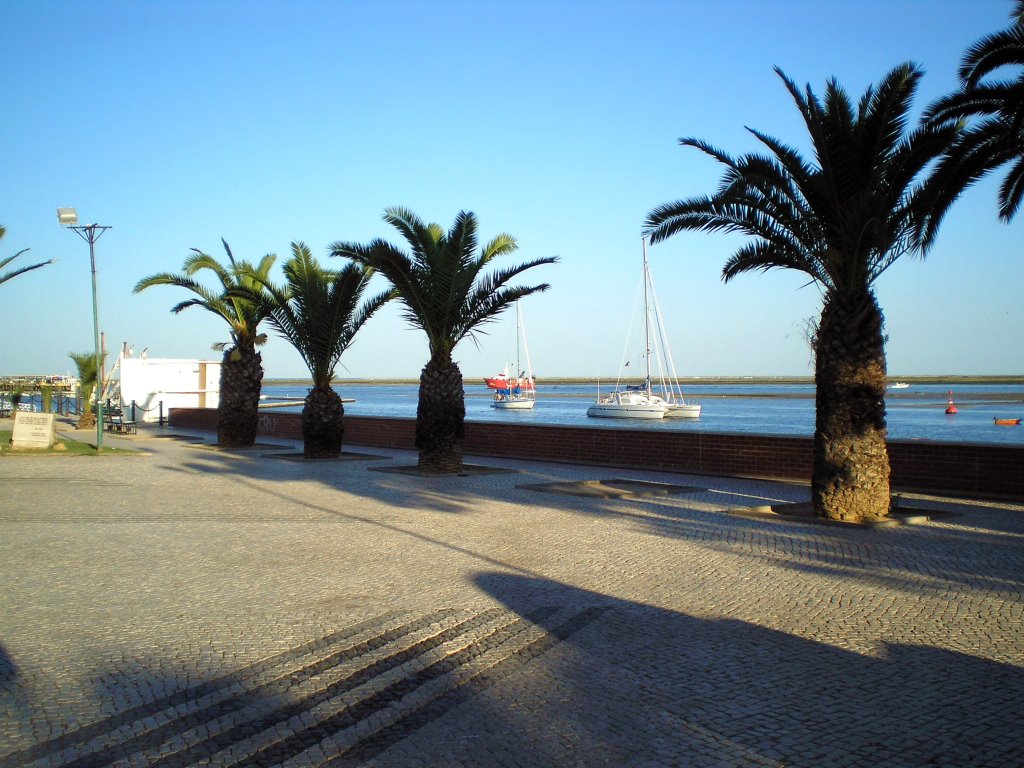
Garden of the Olhanense Fisherman – leisure area of the city, attracts the population and visitors to ride and convivial moments. During the year, take place at this location several cultural nature of events. In this garden is implanted a bandstand, construction of the twentieth century and excellent example of civil architecture, hexagonal plant with metal structure that supports a semicircular cover. In several banks arranged this garden, we can contemplate tile panels depicting the revolt of olhanense people against the French and the journey of Caique Bom Sucesso in Brazil. It is one of the picture postcards of Olhão, at the entrance and near the Ria Formosa, for those arriving from outside.
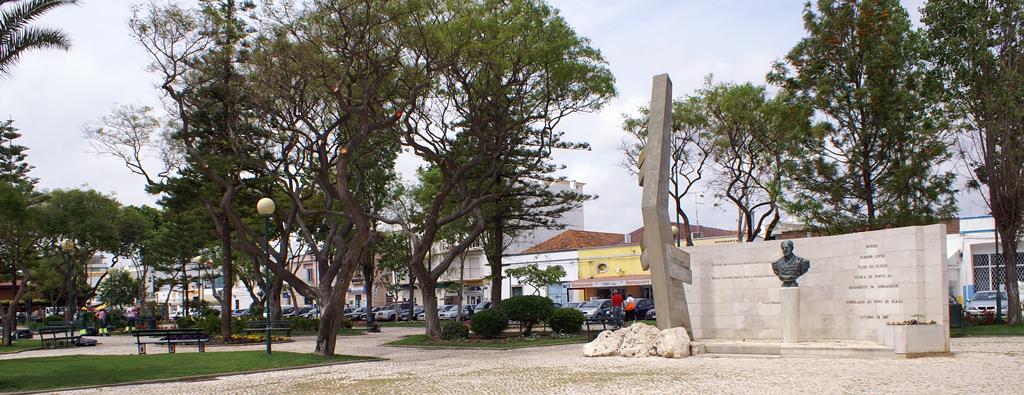
Garden of the Joaquim Lopes – a green and recreational space located near the Ria Formosa, which opened in 1967, in which we can find the monument to Sir Joaquim Lopes, olhanense who distinguished himself by his bravery, having made numerous rescues of shipwrecks. Here, near the place where you catch the boats that make the crossing to the islands of the Ria Formosa (Culatra, Armona and Farol), the sea and the history of heydays combine themselves. With a beautiful view over the Ria, this garden hosts various tree species, making it a nice place to rest and conviviality.
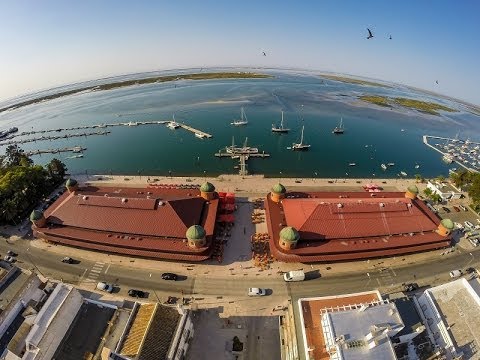
Riverside area – along the 5 October Avenue, with panoramic views of the Ria Formosa and the architecture of the cubist city. In this area, it is noted by the location of many restaurants confecionam typical dishes of the region and attract hundreds of enthusiasts on a daily basis, as well as its splendid terraces and a vibrant nightlife. It is for these reasons, one of the areas of the city, which always feel like coming back. Another attraction of this area are the fish markets and greenery, strategically located in this avenue overlooking the Ria Formosa. It is one of the dynamism centers olhanense city, always with the Ria as a backdrop.
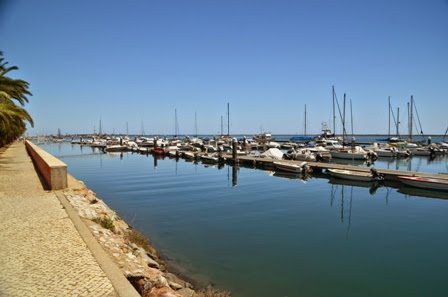
Recreational Port – with capacity for 350 vessels, this proves to be an excellent infrastructure to support recreational boating in the Eastern Algarve. On the western side of the riverside area, this important tourist value, attracts many owners of pleasure craft, here leave anchored their boats, being housed at the hotel opposite or other hotels in the county and hence run the discovery of the Algarve . With the increasingly strong bet in this county tourism is undoubtedly a huge infrastructure importance that, in the future, whether to join an outdoor amphitheater and additional buildings with shops and offices.
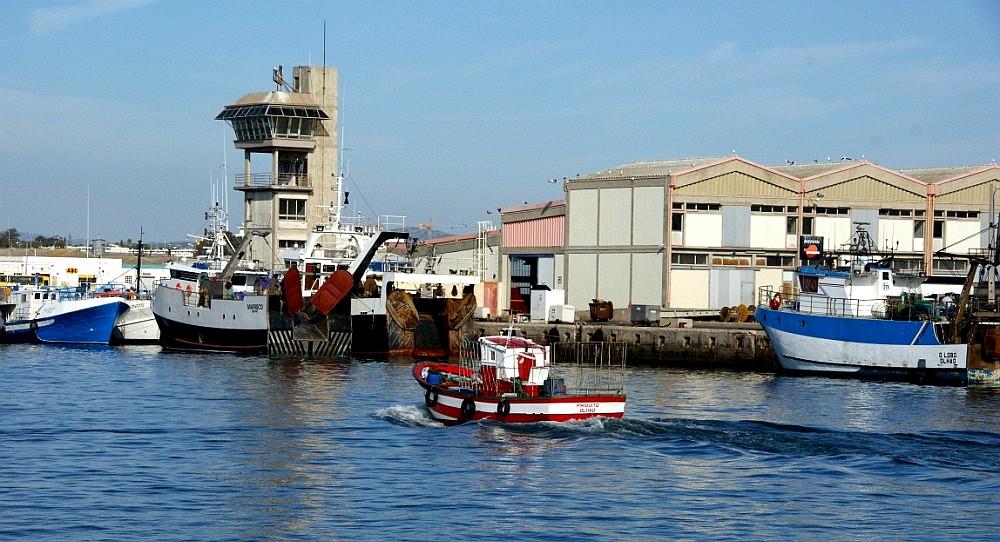
Fishing port – the largest in the Algarve fishing port is home to various types of vessels to practice more symbolic labor activity of Olhão. More than one point of tourist interest, that is, the Olhão Fishing Port is one of the pillars of the economy place. In this port, They are discharged daily fruit of toil, many tons of fish que reach Algarve Thousands of citizens, neighboring regions and to Spain. It has always Been Thus, from the village foundation to lift the city Olhão. Fishing is the anchor of this live and the Fishing Port your heart.
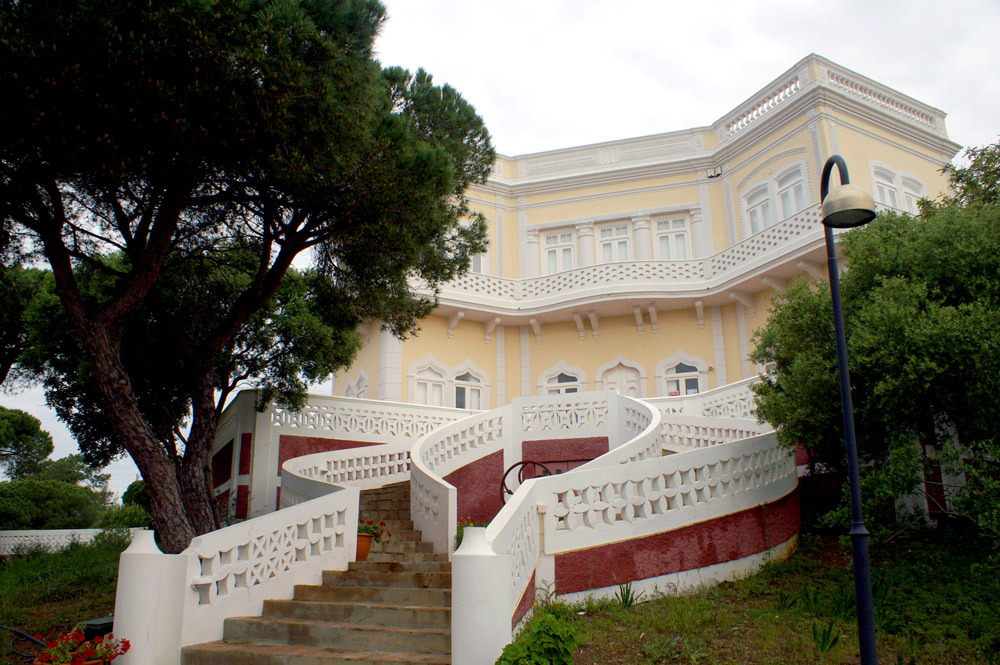
Mansion of Dr. João Lúcio – Quinta de Marim, the home of the poet João Lúcio is a must see for those who want the beautiful cottages of the early twentieth century in this county. It began to be built around 1916, and the work stopped with the death of its owner, João Lúcio, lawyer and poet, in 1918. The building features an original composition. The Chalet João Lúcio is a rotating house, circular plant, devoid of rear, right, also a main facade. The squaring of the circle, present in many systems of thought, gives this house, among other things, a strong symbolic charge. The accesses are performed from four stairs distributed by the cardinal points: the staircase to the north has the shape of fish, south of guitar, violin spring and snake west. Thus, the fish is water, fire guitar, violin air and the serpent earth.
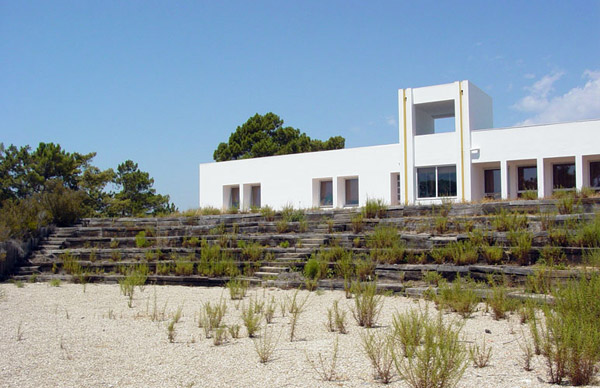
Environmental Education Center Marim – an area of 60 hectares, this is forest areas, marshland, dunes, marshes and salt flats, including several tracks observation of nature, also harboring the headquarters of the Natural Park of Ria Formosa, a space for the creation of the Portuguese Water Dog, here originated, several restored traditional houses and archaeological remains of an establishment of fish salting the Roman third century era. This center aims to develop awareness and environmental education activities and is intended to represent the most significant components of this natural protected area, established in 1987.
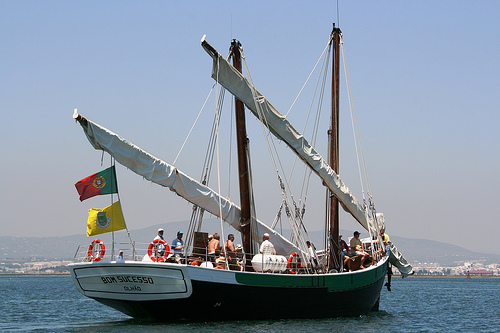
Caíque Bom Sucesso – when the expulsion of the French troops of Olhão and consequently the Algarve in June 1808, the Caique Good Success leaves for Brazil to communicate the good news to the King. Its crew, coming from Olhão, faced a dark passage and its pilot, without any guidance device or chart, was guided by a primitive estimate drawn map, taking advantage of the sea currents and favorable winds. When returning to Olhão, they announce: the Prince Regent granted to the former place of Olhão the honorary title of Olhão Village Restoration. The replica of the original vessel is moored next to the Municipal Market Olhão and allows your visit, so that the history of Olhão heroic. The Caique Bom Sucesso before ‘stay’ to the story, was used in fishing to the top, the Mediterranean and North Africa and the transport of goods to cities such as Cadiz, Tangier, Lisbon or Porto.
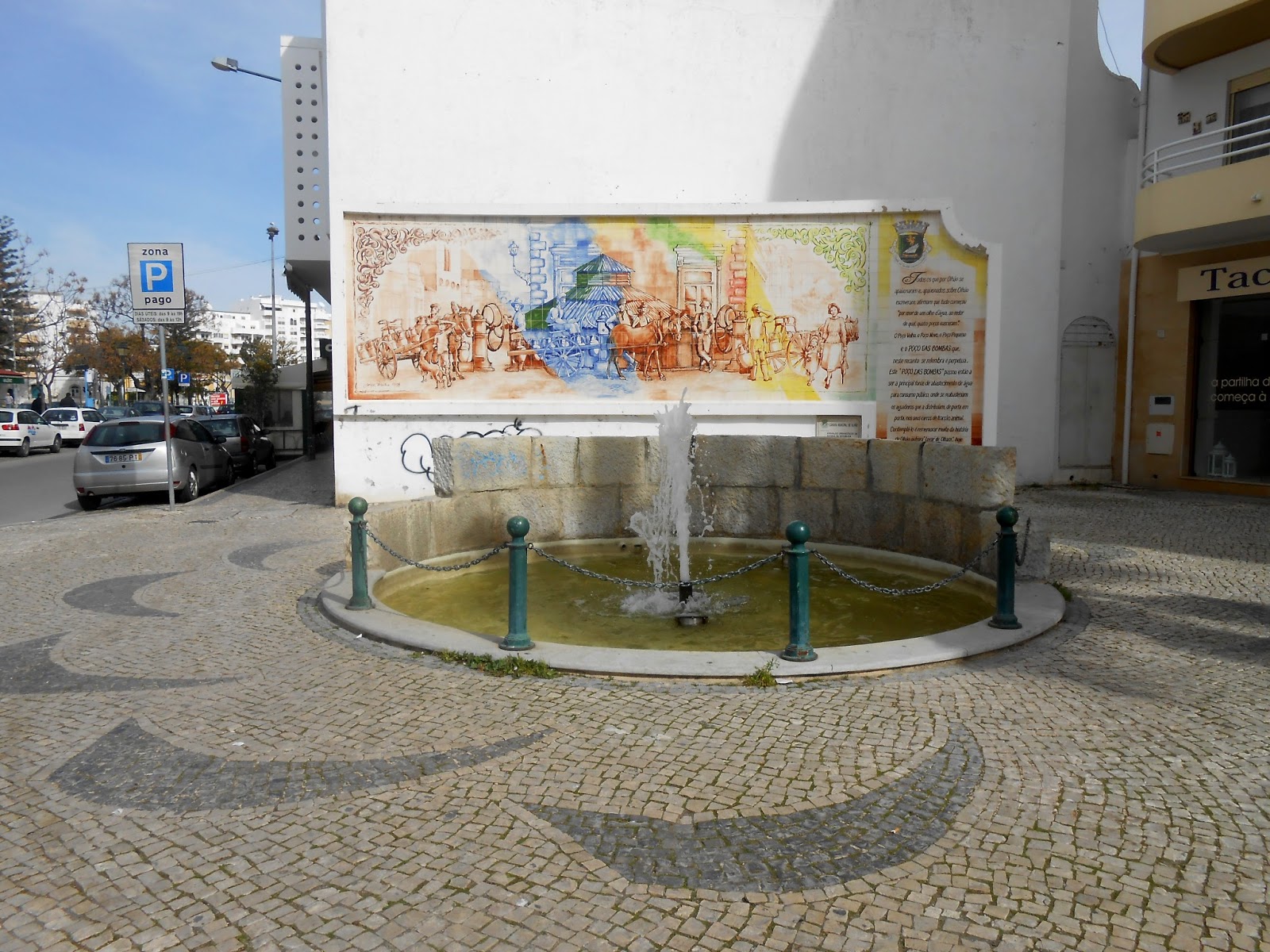
Well of pumps – this place existed a well that will have been for many years, the main source of water supply for the village public consumption, which replenished the water carriers, the distributed door to door. In 1998 rehabilitation target and today displays a beautiful panel Jorge Timothy tile, alluding to water carriers, and a small ornamental fountain with illuminated water reasons.
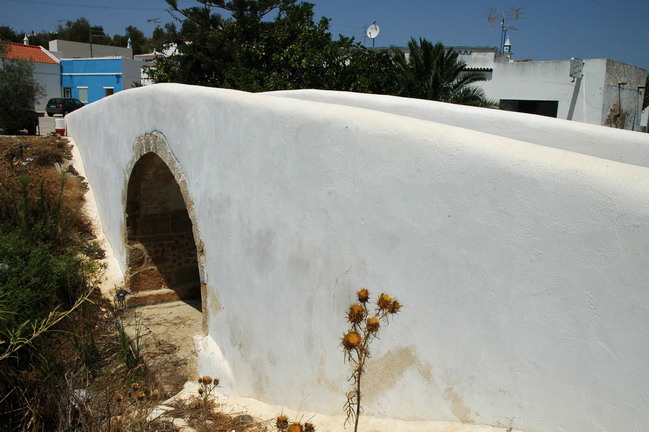
Quelfes Bridge – consists of a single round arch, the Quelfes bridge has a concrete date of construction, and some authors point to the first century AD linking it to the various roads crossing the Algarve territory during the occupation of the people coming of the Italian peninsula. But others find architectural features of Late Medieval period, with a possible reconstruction and expansion already in the Modern Age. However, this structure holds a very special meaning for the county’s population, as on July 18, 1808 – two days after the start of the uprising in the city of Olhão – is locked in this place a battle between the forces loyal to the Portuguese Crown made by men of Moncarapacho and Olhão, against the French troops of Junot. The victory of Olhão is marked with a plaque placed nearby.
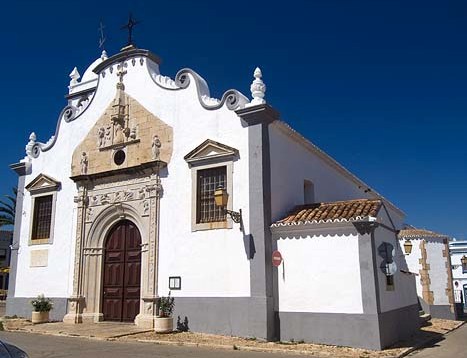
Mother Church of Moncarapacho – dedicated to Our Lady of Grace, it is one of the religious monuments to visit in the municipality of Olhão, of medieval origin, was rebuilt in the Renaissance period. This highlights the monumental portico, by André Pilarte, which is an impressive piece of this type in the Algarve. This porch has a great delicacy in the design of sculptural elements, among which are a turbulent Ecce Homo associated with the representation of the arrest of Christ, figured by the Romans and the Flagellation soldiers, represented by figures with whips. Grotesque meeting the pilasters and the upper frieze are of great artistic quality. Inside, stately and solemn, show up the paintings of the chapels of Souls, Calvary and St. Anthony and the imaginary as Our Lady of the Rosary and the Lord of Patience.
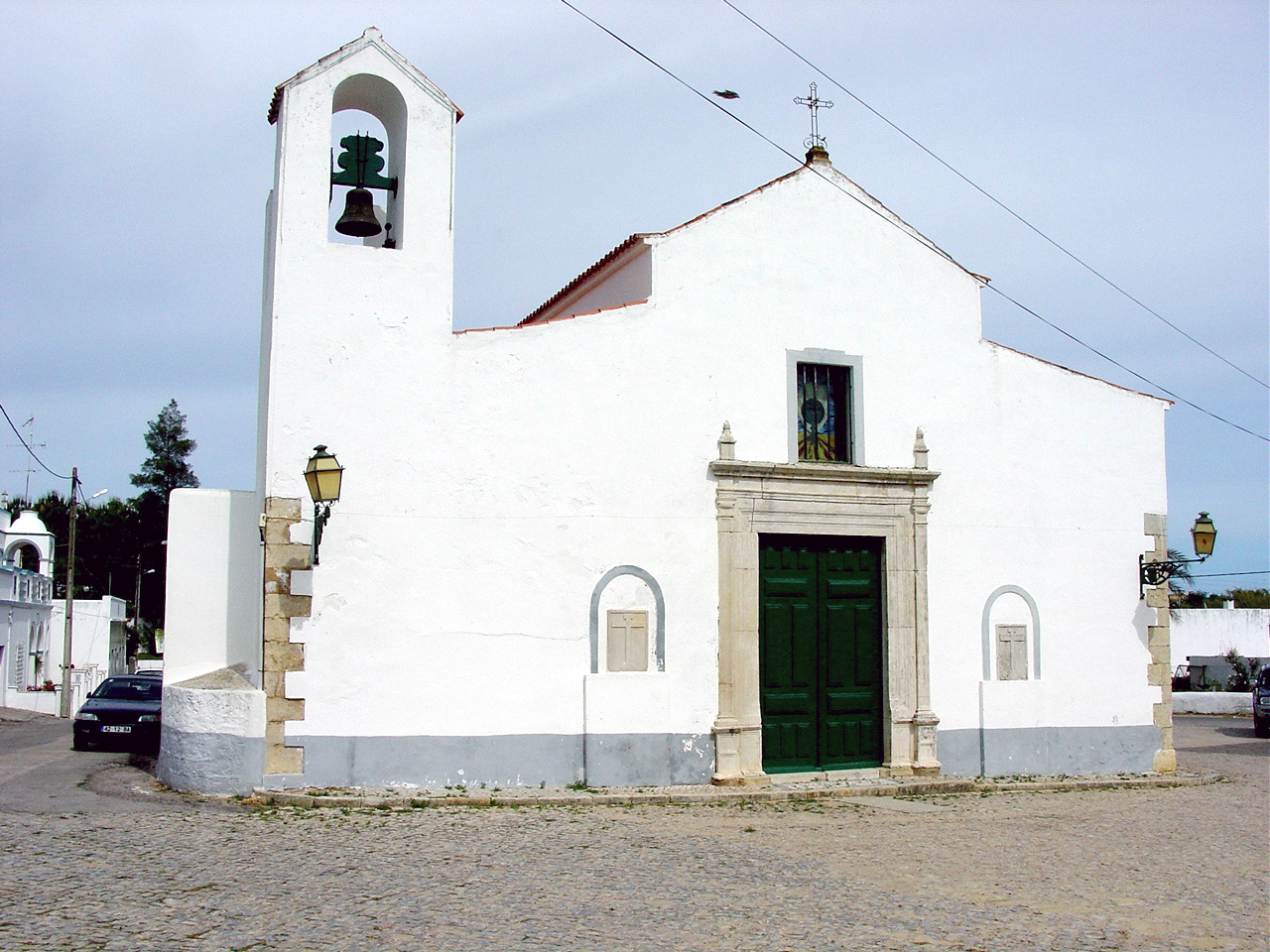
Mother Church of Quelfes – the original church dates back to the late fifteenth century, undergoes a great transformation in the second half of the sixteenth century, which gives it its recent appearance. This includes the type of churches transition from the Manueline period to the Renaissance square chancel with a ribbed vault and three naves and four bays with wooden cover. This study highlights the Manueline triumphal arch decorated too, with high-quality sculptural, while the main door is already Renaissance with rectangular elevation, framed by two small smooth pilasters and capitals of curved spleens.



